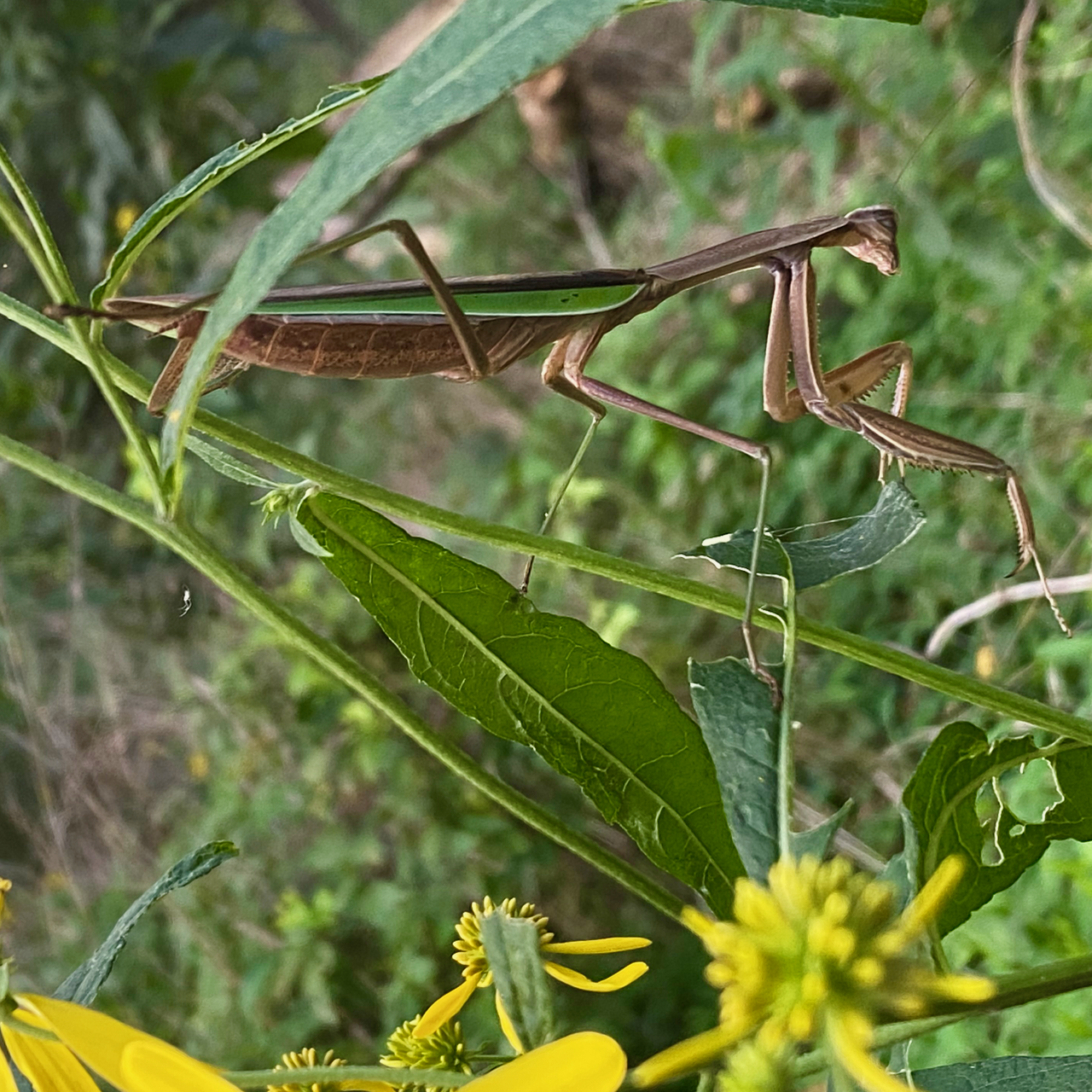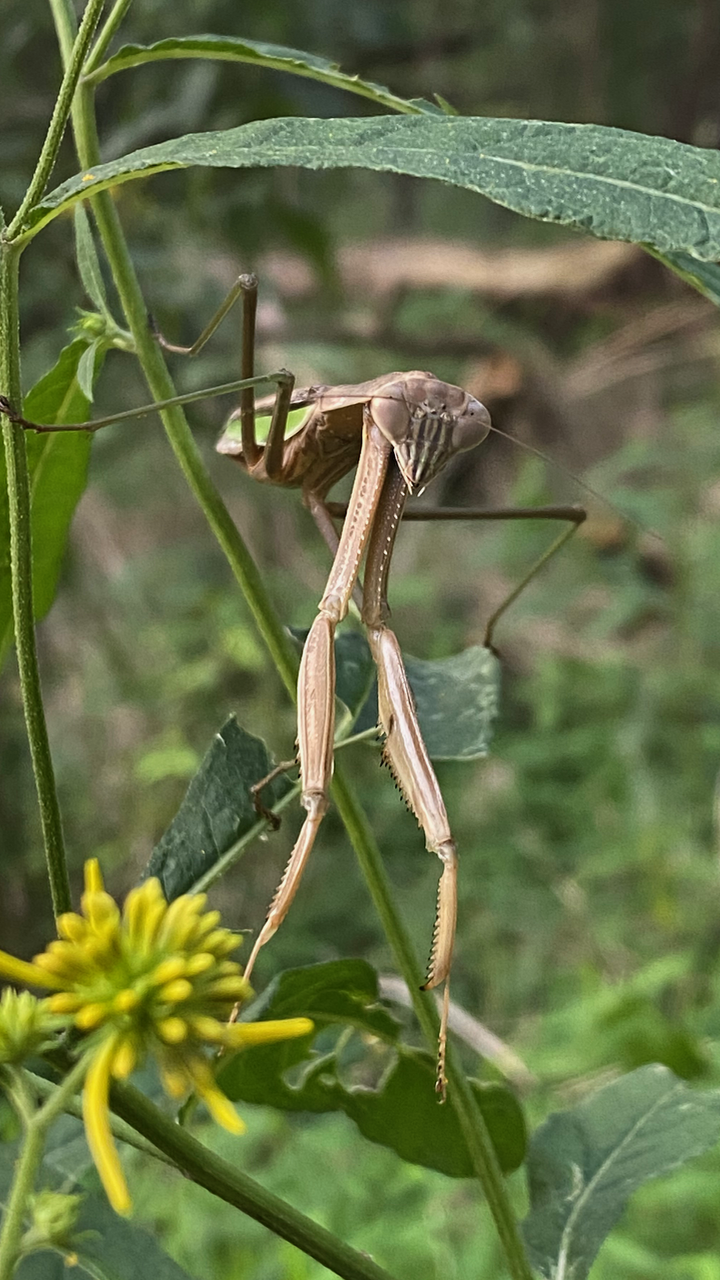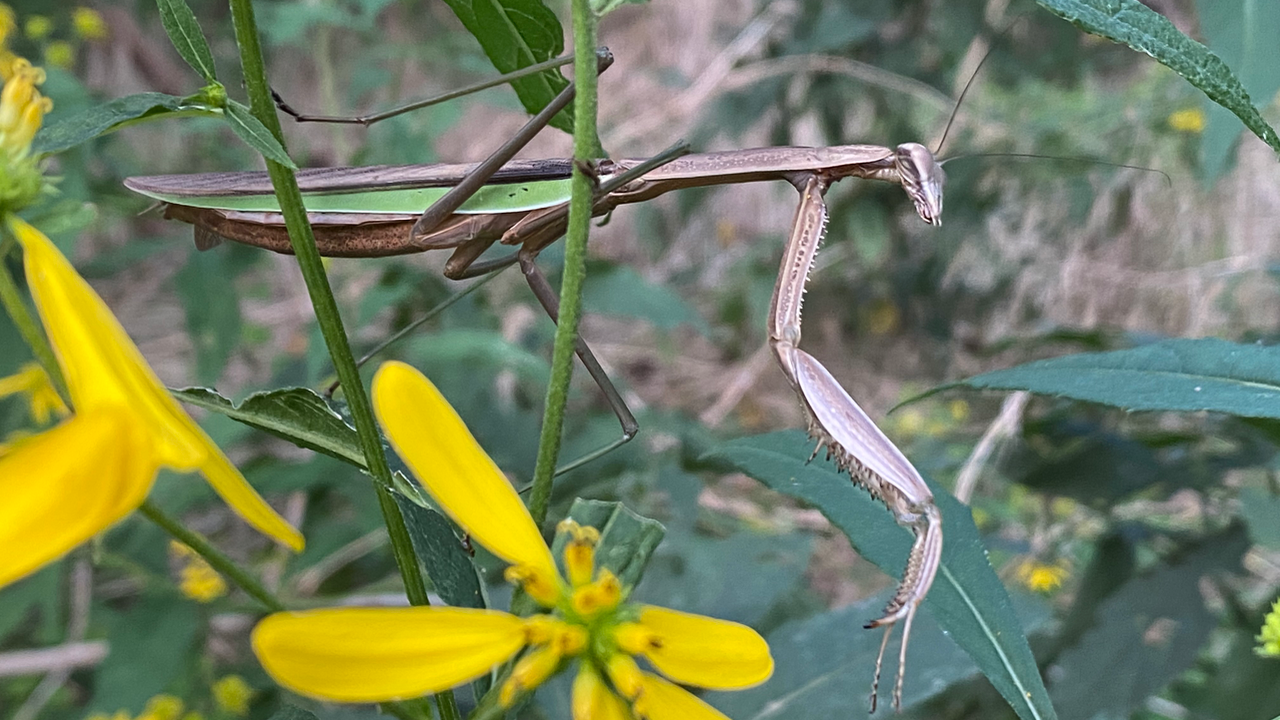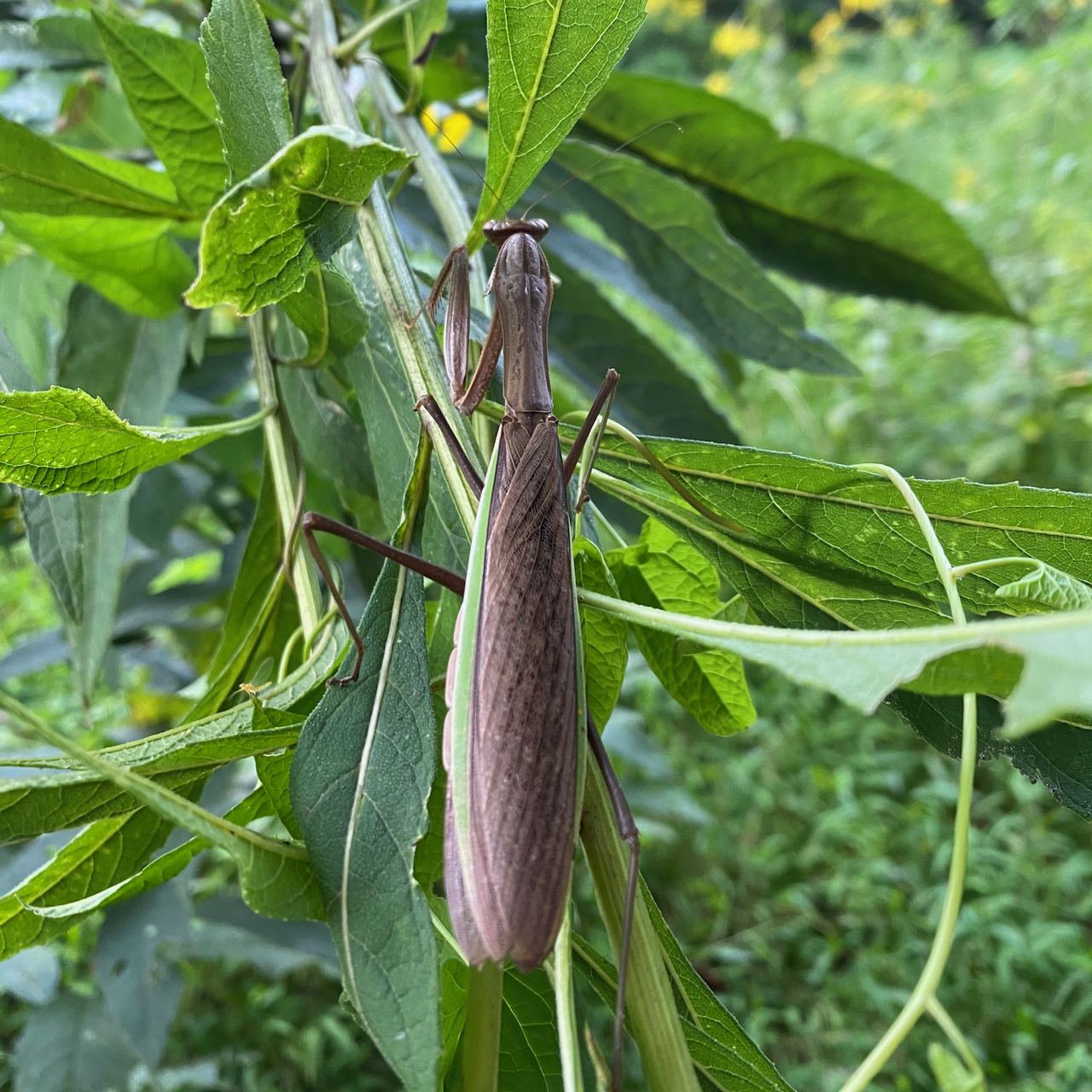Praying Mantids - Ambush Predators
Recently, I was lucky enough to see a couple praying mantids. I am always excited when I see a wild animal or an interesting insect. Of course, I love fungi too. In Virginia, mature praying mantids are big insects. The ones in these photos were about 3.5” long. They are great at camouflaging themselves. In fact, they are considered ambush predators. If you look closely at foliage, you might be lucky enough to see one. The two in the photos on this page were seen on different days. However, they were both in the same general area.
Praying Mantids - Compound & Simple Eyes
Praying mantids hunt by sight. Their vision is amazing. In other words, they have five eyes! Three are simple eyes, and the two big ones are compound eyes. The compound eyes are the ones that produce an image. Compound eyes are complicated. They have facets arranged sort of like a honeycomb. Each unit of the comb is connected to an ommatidia. Through a complex process, ommatidia detect moving objects. Once an object is detected, praying mantids move their heads to focus the object using the fovea portion of the eye. Praying mantids can move their heads 180 degrees. The fovea creates a high resolution image of the object. At close range, the image is singular. Farther from the head, they have binocular vision.
The other three eyes are simple eyes. It is common for an insect to have 3 simple eyes. Another name for simple eyes is ocelli. These eyes only detect light and dark.
Chinese Mantis?
Praying Mantids are insects of the order Mantodea. If you remember classification, after order there is species, then genera, and finally families. Mantids are the largest family, and it is called Mantidae. Within the Mantidae family is the species Tenodera sinensis or the commonly called Chinese mantis. These mantids are native to China. They were accidentally introduced to the US in the late 1800s, however they are not considered an invasive species. I am pretty sure that the mantids in these photos are Chinese mantids. These insects are large by US insect standards. The ones in the photos were between 3-4” long. Interestingly, mantids are dated 35 million years back in fossil records. They really are an amazing find in the wild.
Read more to find out some interesting facts about praying mantids.
References:
First, if you want a simplified resource to learn more about insect eyes, read Insect Eyes: How do they see the world? By Thomas Daguerre.
Next here is a comprehensive resource about these amazing mantids.
Finally read this and decide whether you think the mantids in the photos are Chinese mantids.




